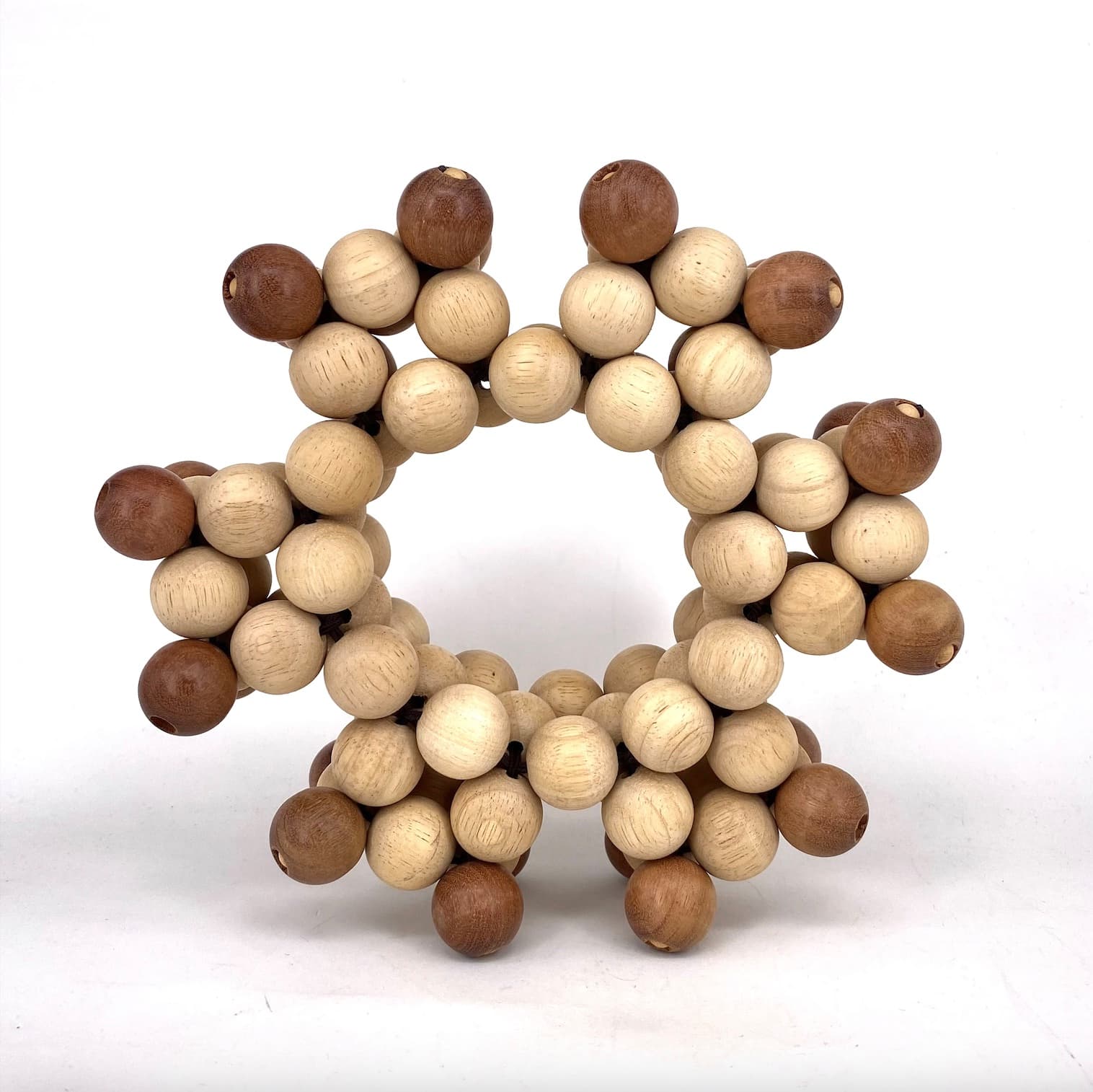Artists
Bih-Yaw Jin
Professor
Department of Chemistry, National Taiwan University
Taipei, Taiwan
Statement
As a chemist fascinated by nano-scale geometries, I've delved into the world of mathematical beading, discovering a method to create rough 3D representations of various fullerenes, zeolites, and other molecular structures solely using beads and strings. These bead models serve as macroscopic valence sphere models for molecules, showcasing their structural intricacies. In this exhibition, I introduce an expansion of these bead models, transforming specific sphere packing arrangements into an innovative category of interlocking puzzles centered around bead chains with different chain lengths.
Artworks

Cyclo-hexacubane
16.0 x 16.0 x 6.0 cm
Wooden beads
2021
This intricate bead chain sculpture, titled Six-Connected Cubes in a Ring, presents a captivating arrangement of six interconnected cubane molecules forming a ring. Inspired by the principles of molecular modeling explored in the my previous research on polyhedrane structures (Bridges Linz 2019), this artwork extends beyond the representation of single cubane to depict a more complex, multi-unit architecture. While my paper details methods for constructing single polyhedrane cages like cubane, the creation of this cyclical hexamer involved the development of innovative strategies for interconnecting these units, showcasing a higher level of topological complexity and structural design.

Body-Centered Cubic PentadecaCubane
21.0 x 21.0 x 21.0 cm
Wooden beads
2024
This bead chain model is a fascinating representation of fifteen cubane molecules arranged in a body-centered cubic (bcc) lattice. Expanding upon the principles of bead chain molecular modeling, which I has explored in the context of single polyhedrane structures, this intricate construction visualizes a more complex, extended architecture. Each cubane unit, a cage-like hydrocarbon (C8H8), is represented by linked beads, and the overall arrangement demonstrates a higher level of topological organization, forming a repeating three-dimensional lattice structure. This model highlights the potential of bead chain techniques to move beyond individual molecules and explore the spatial arrangements of interconnected molecular units.